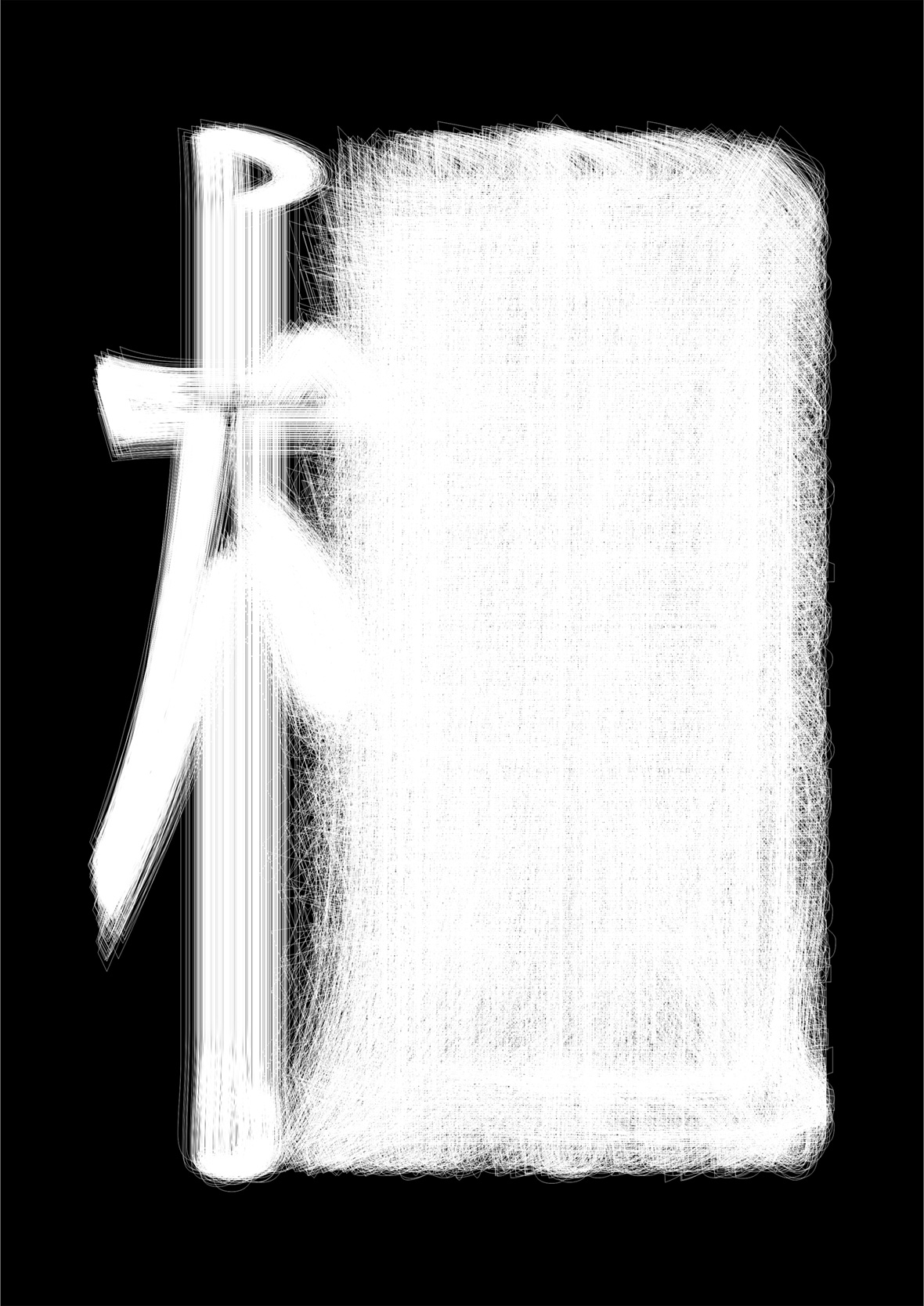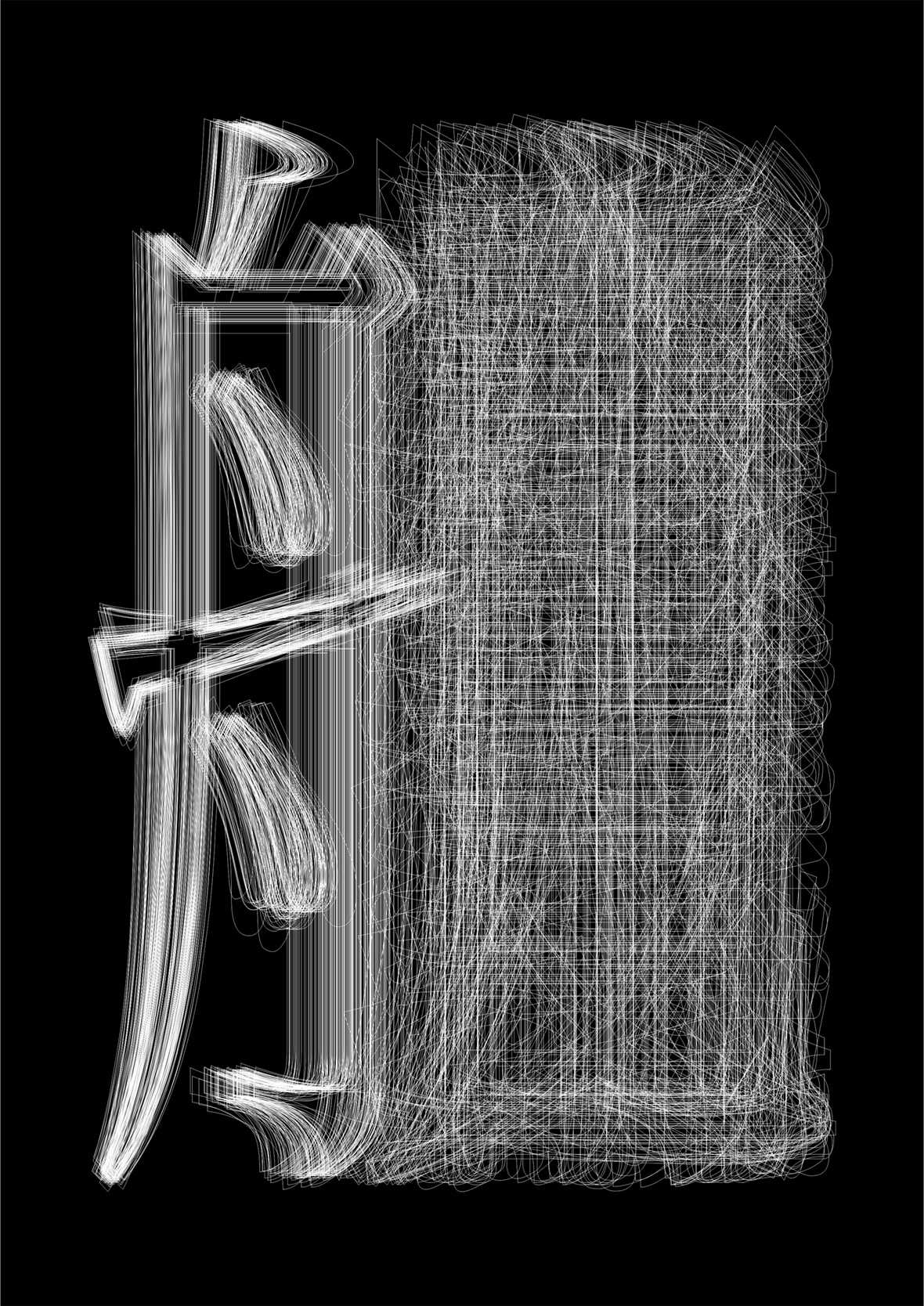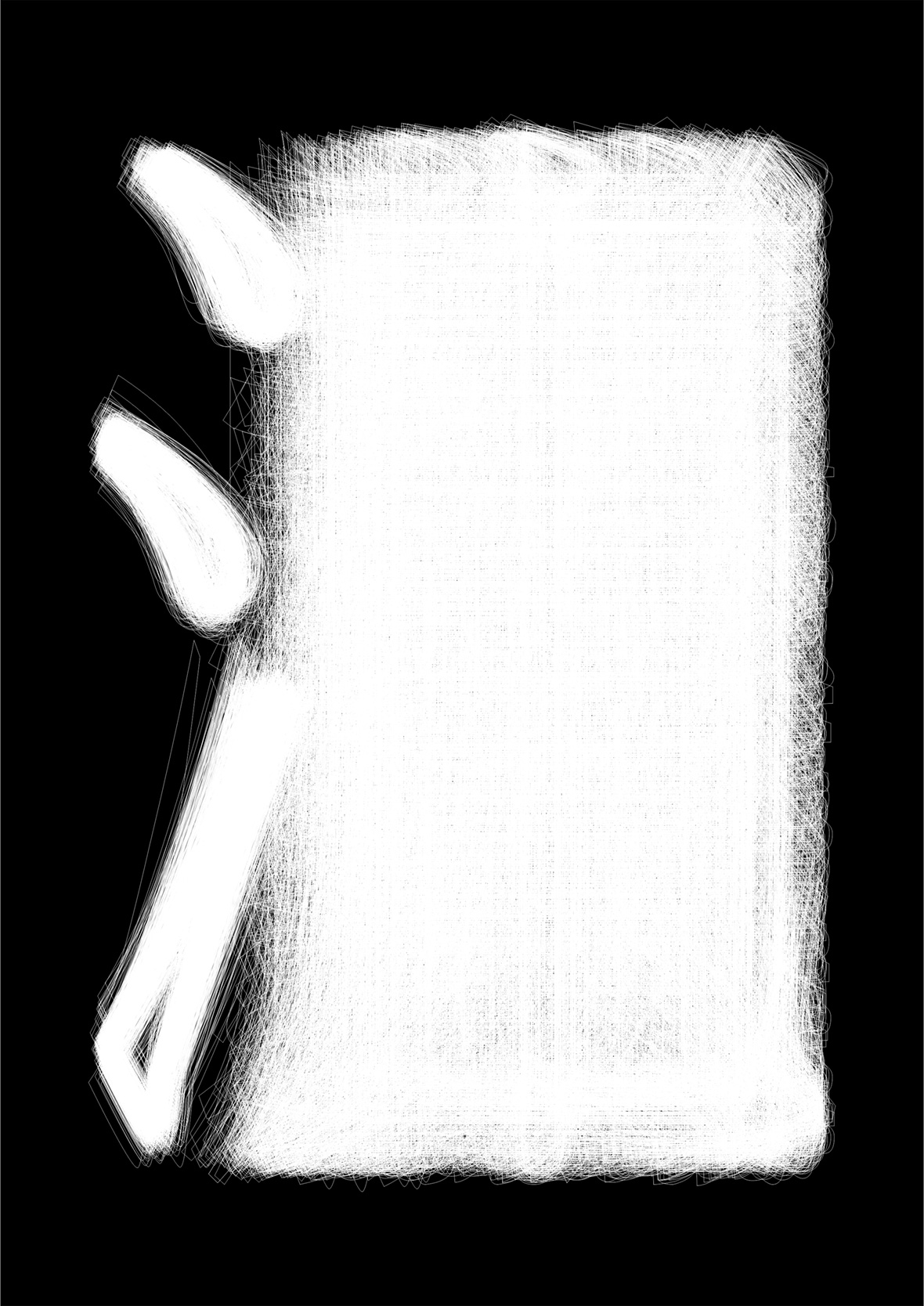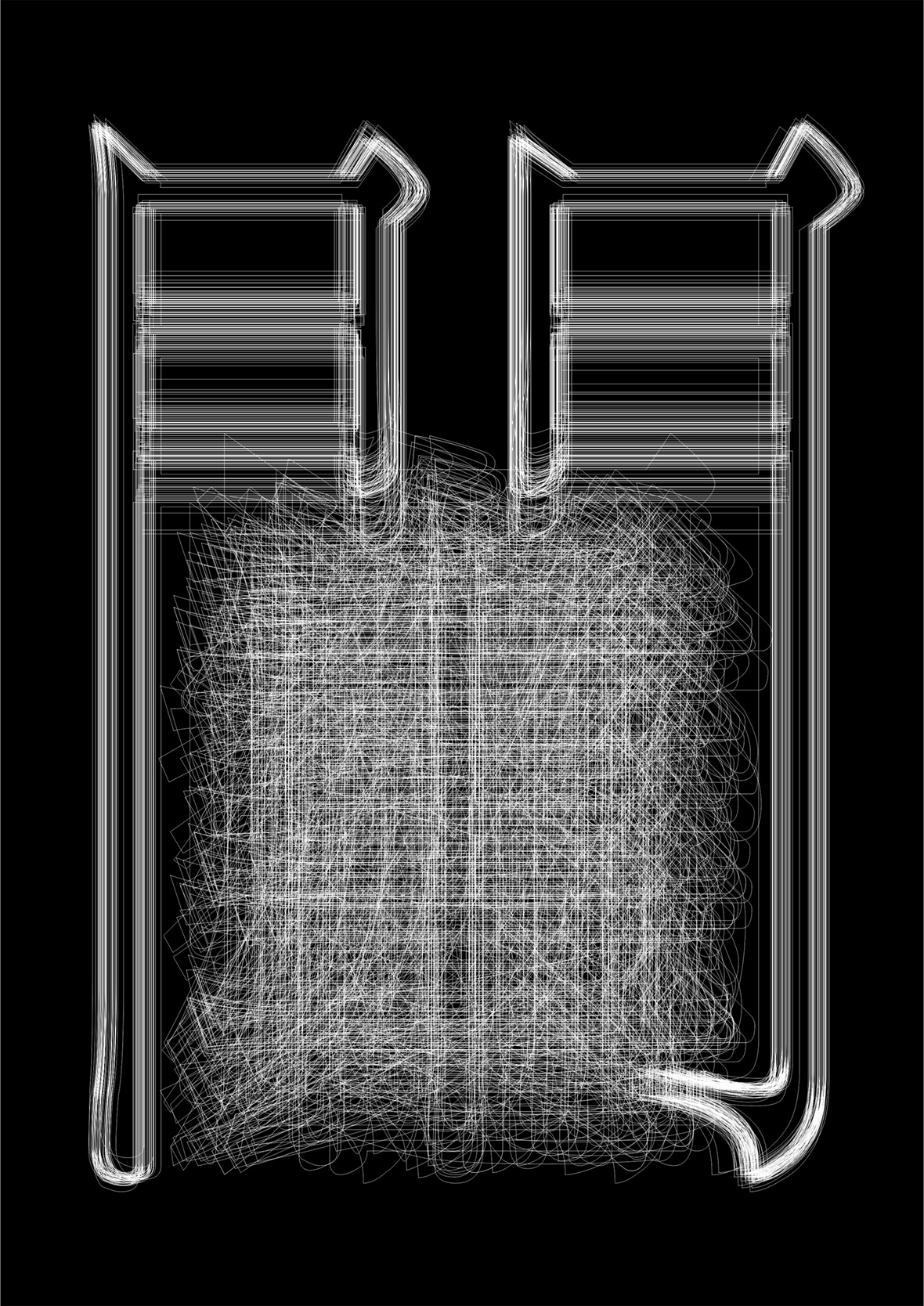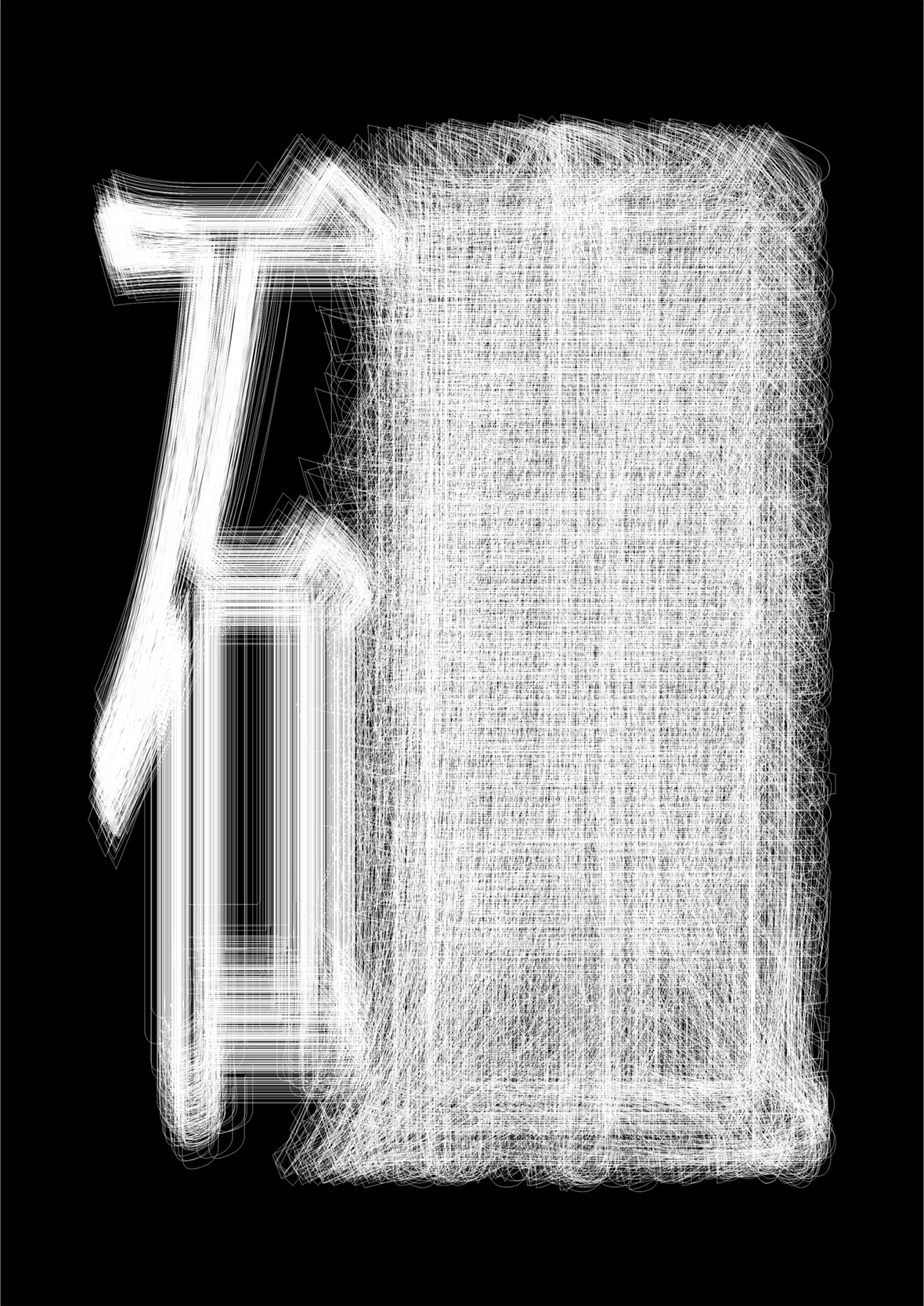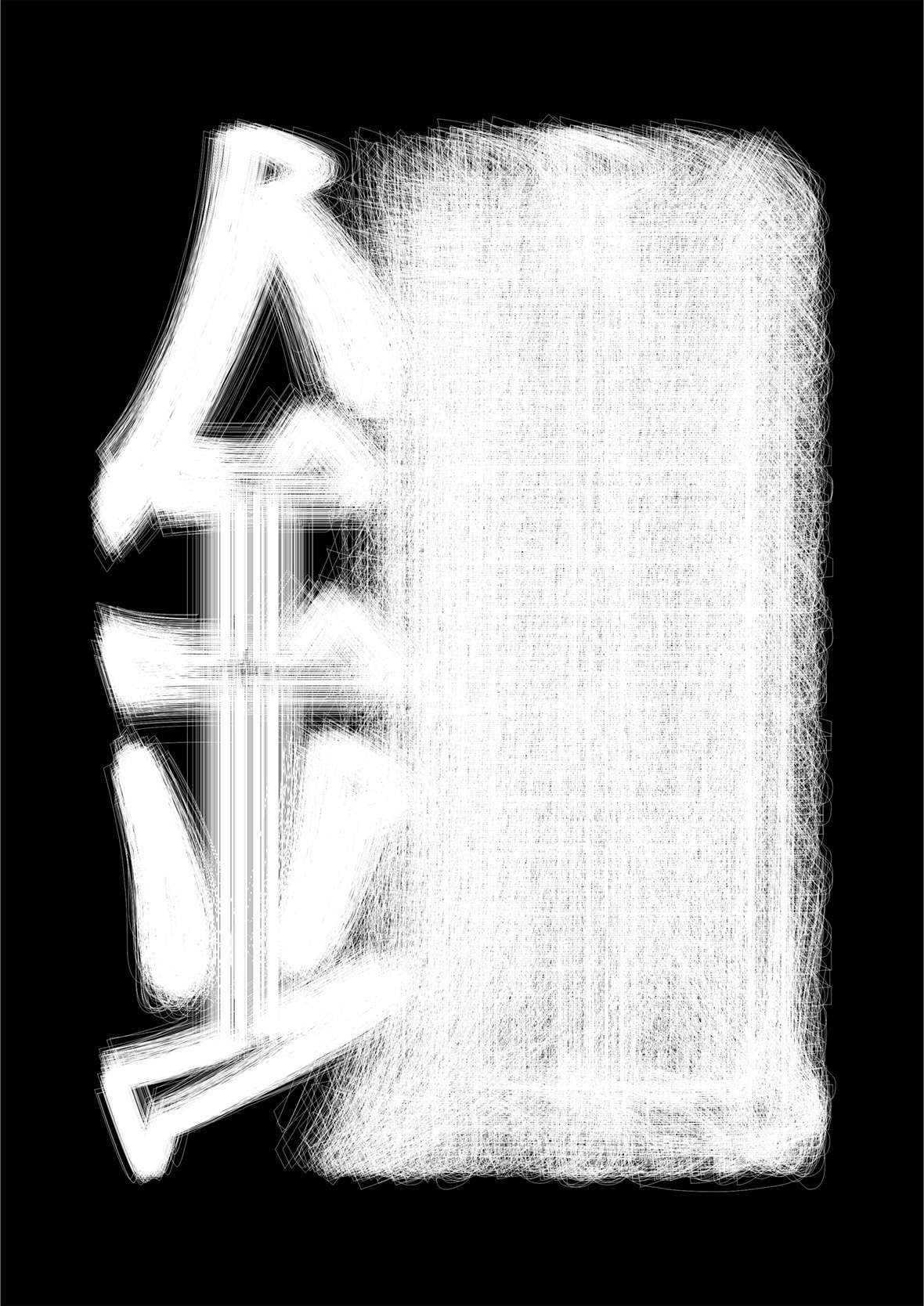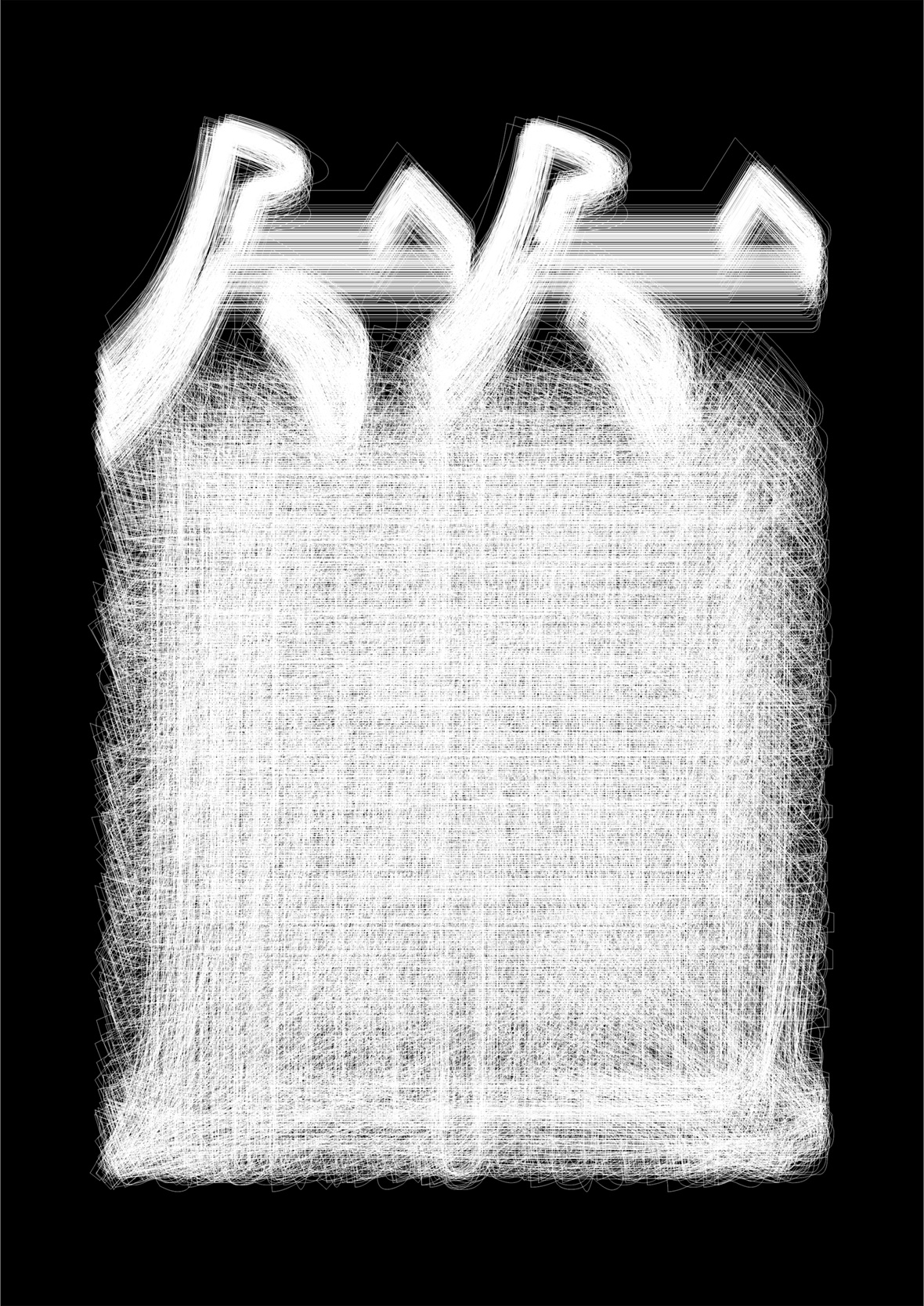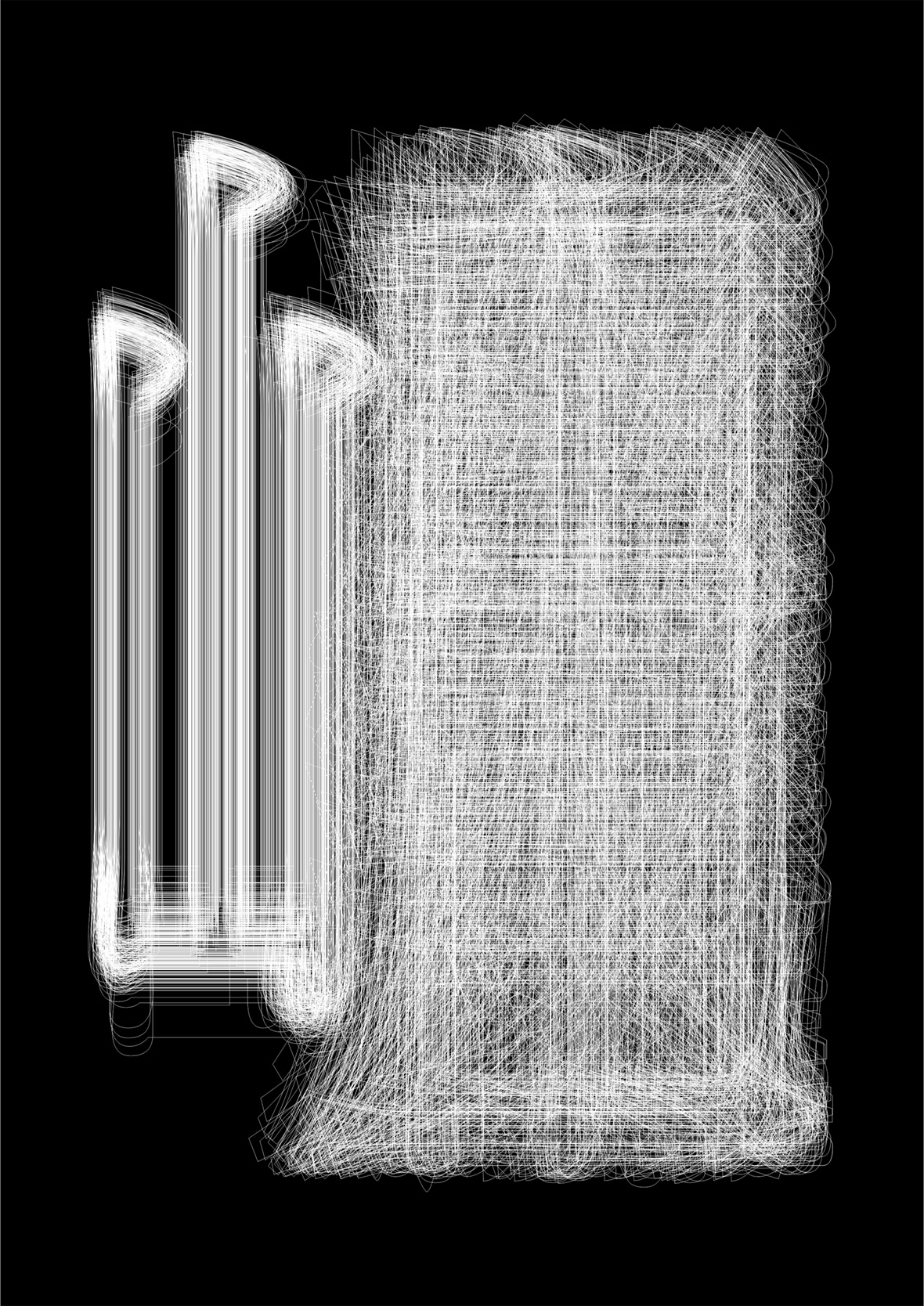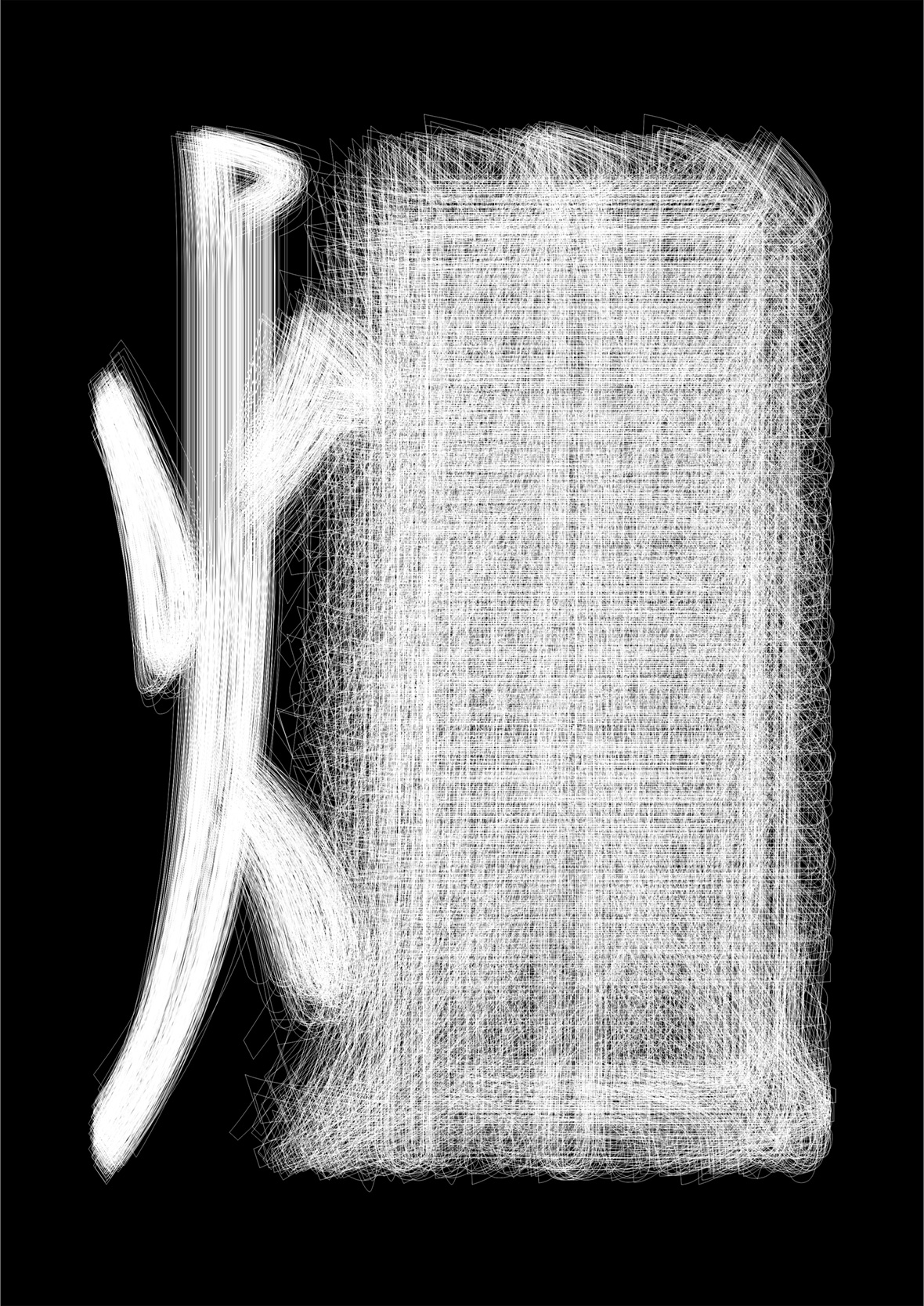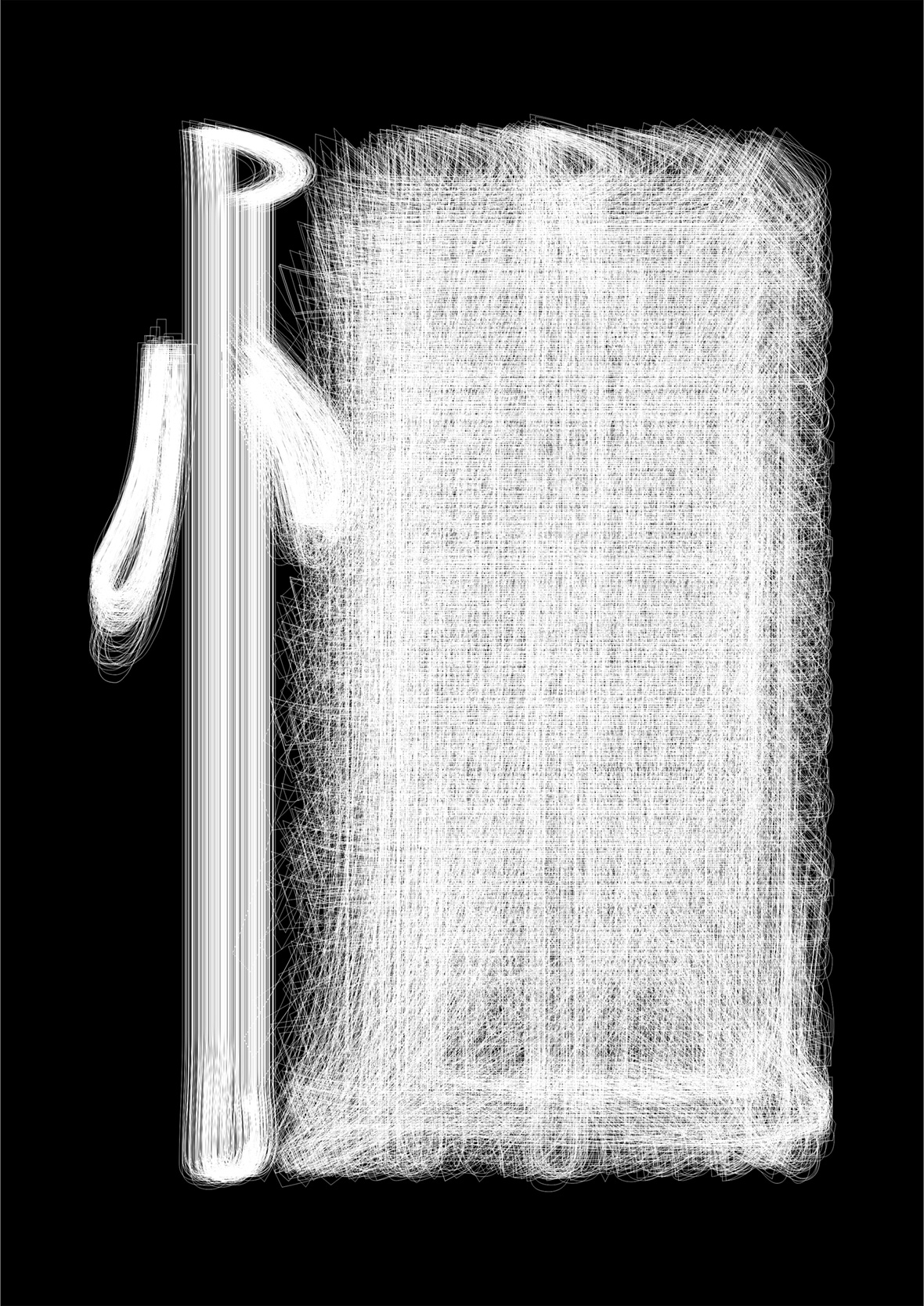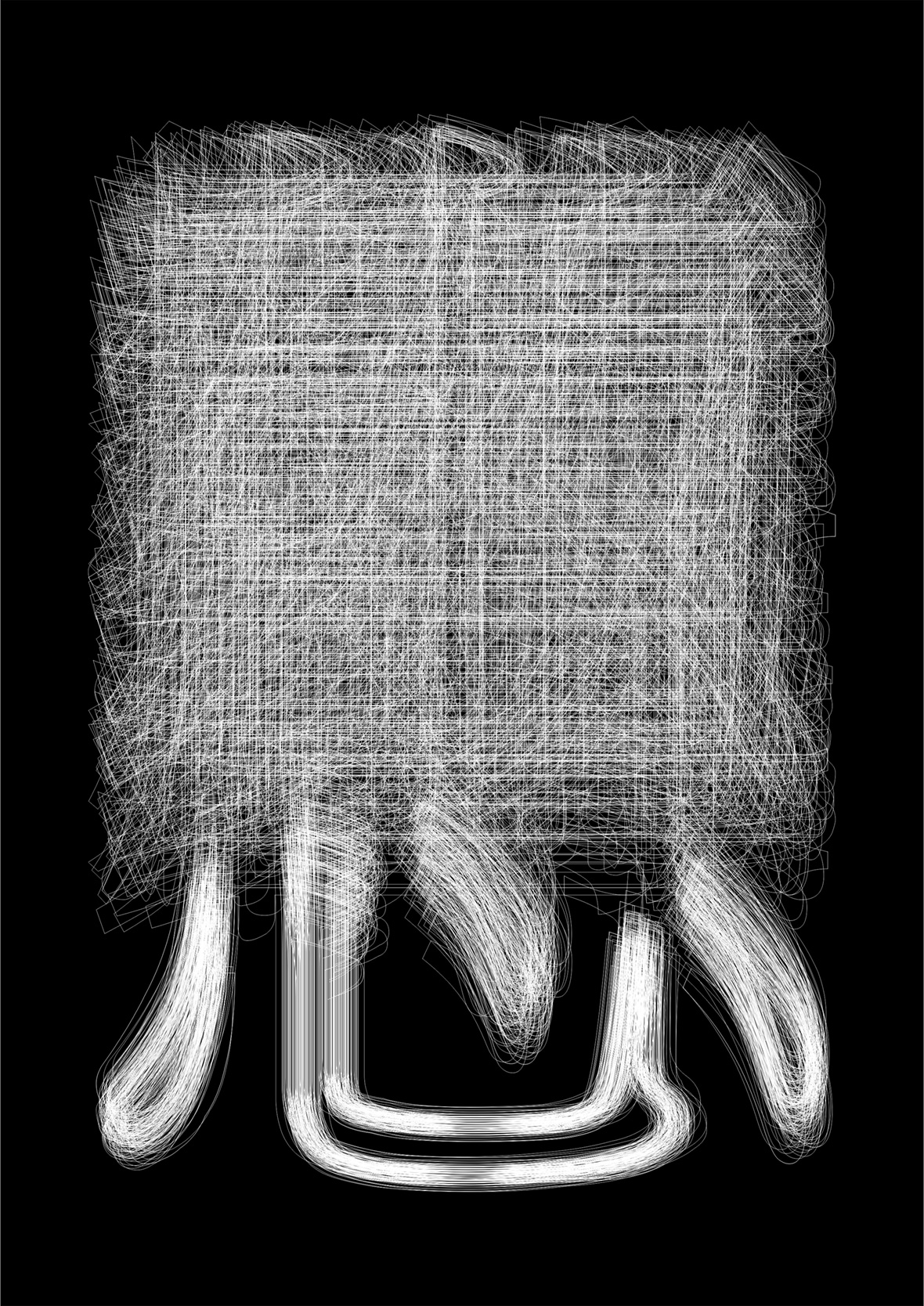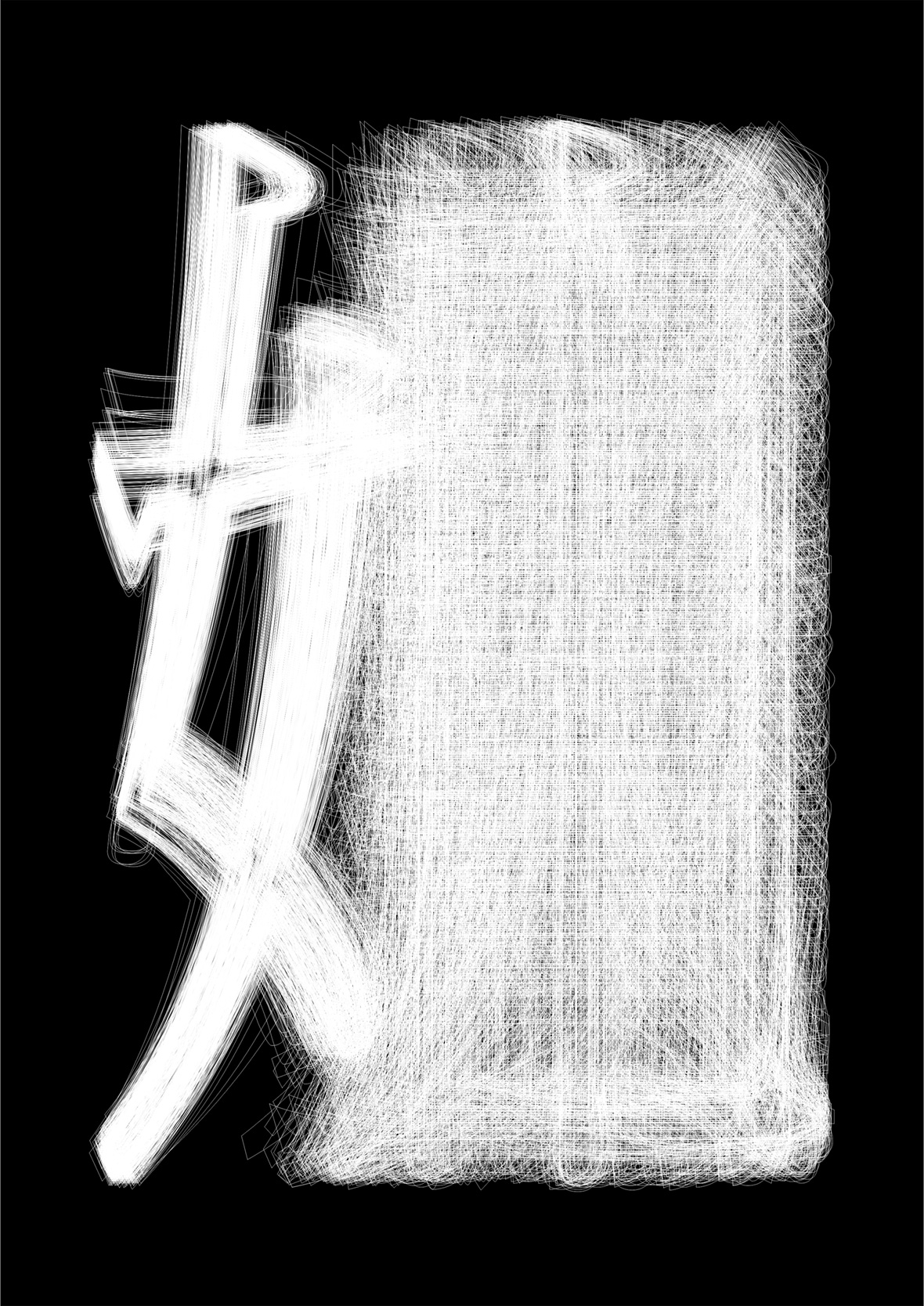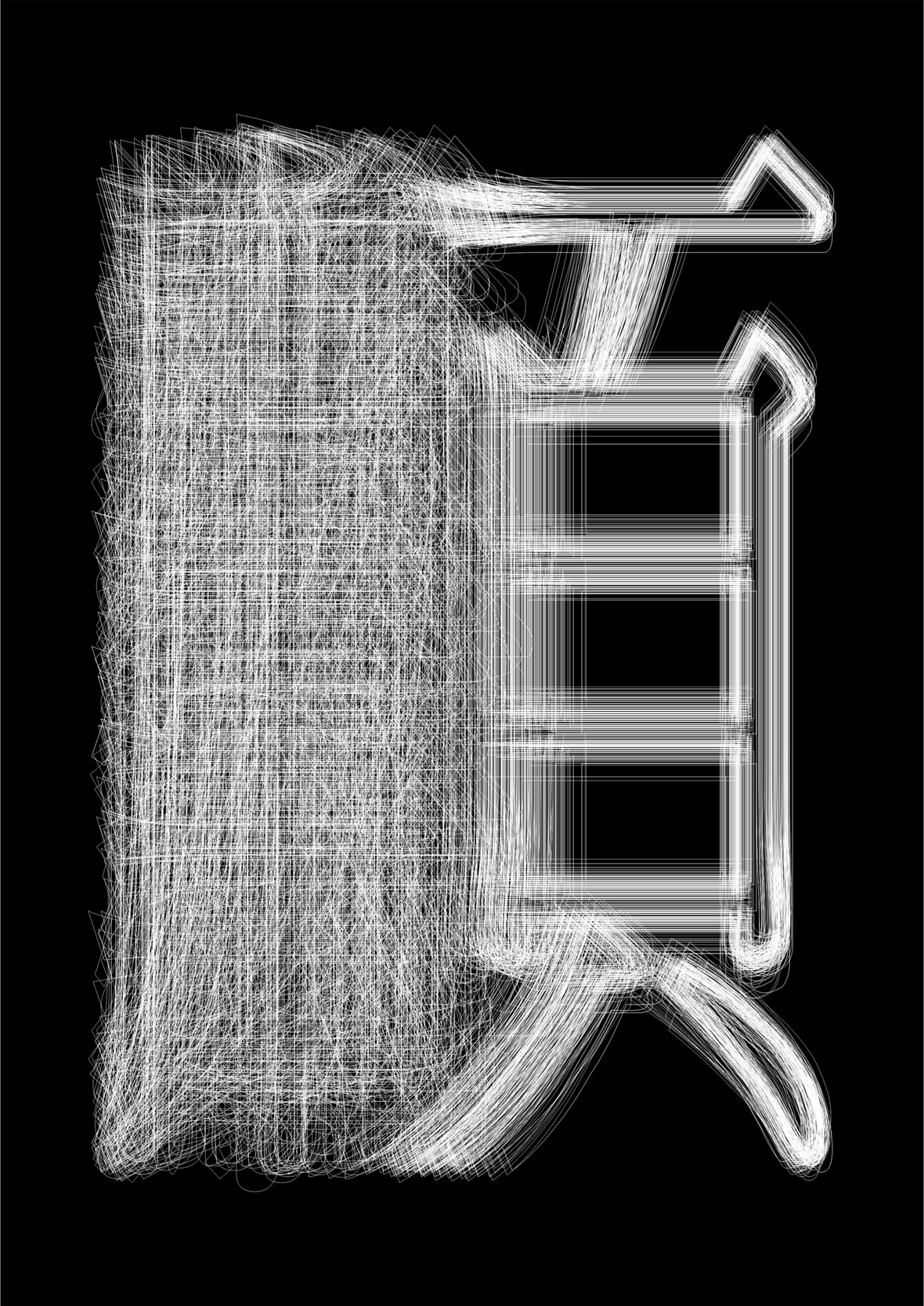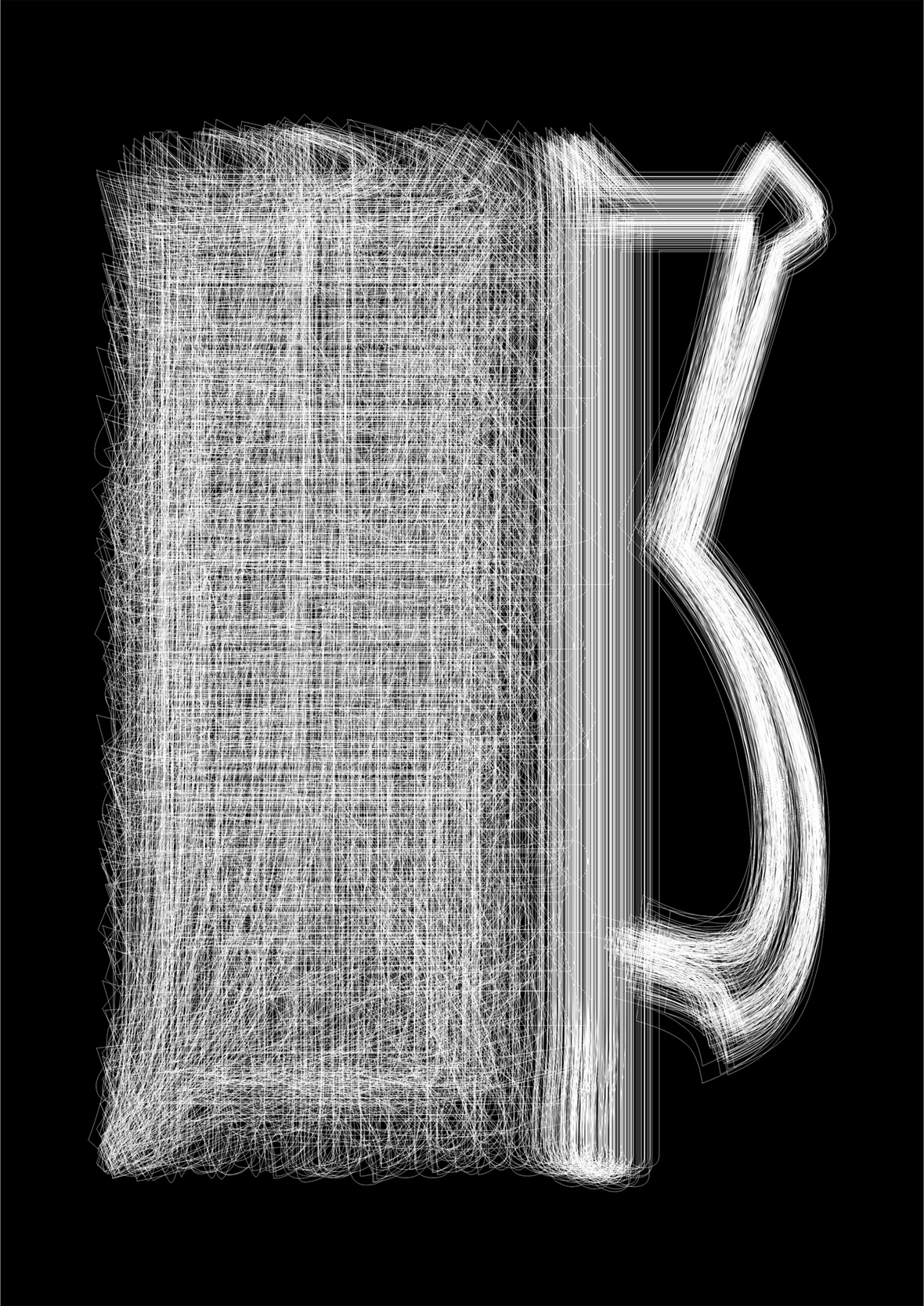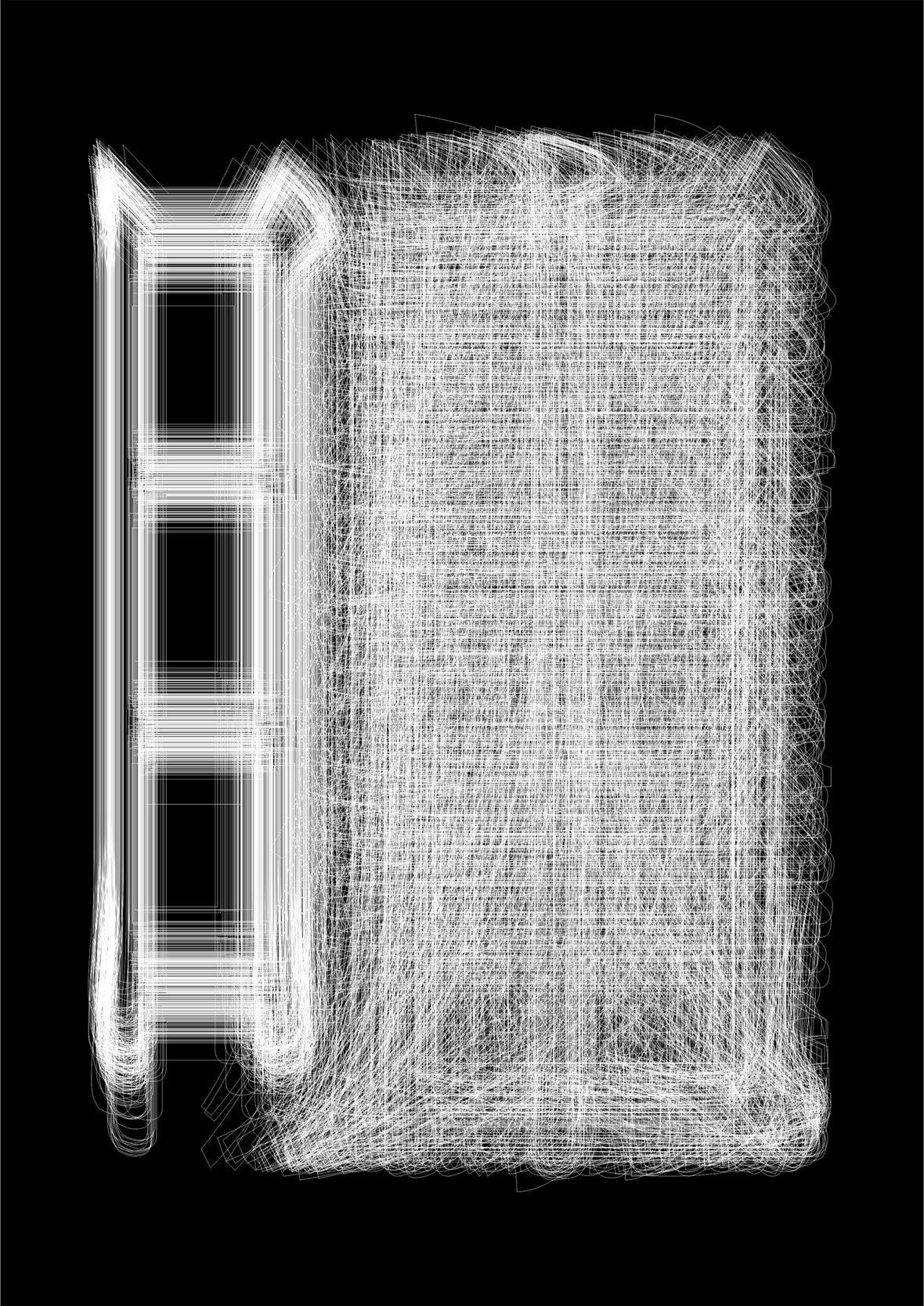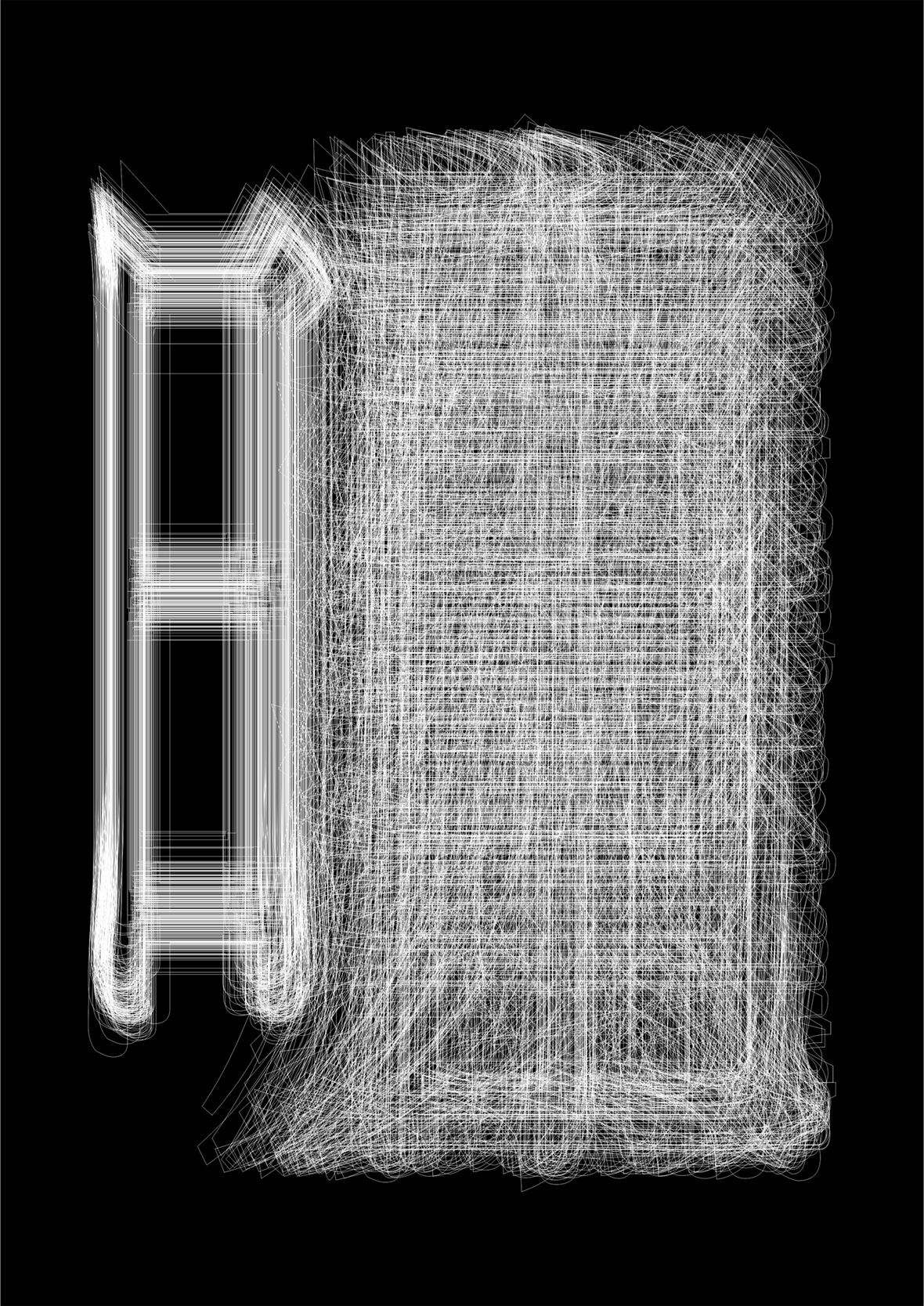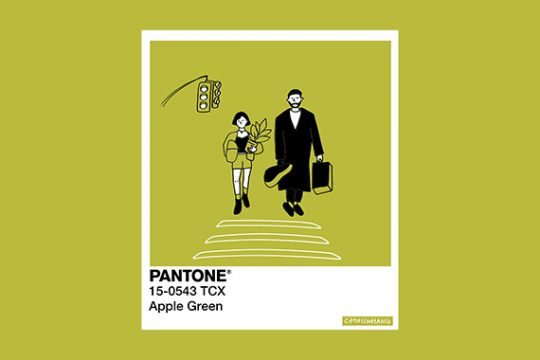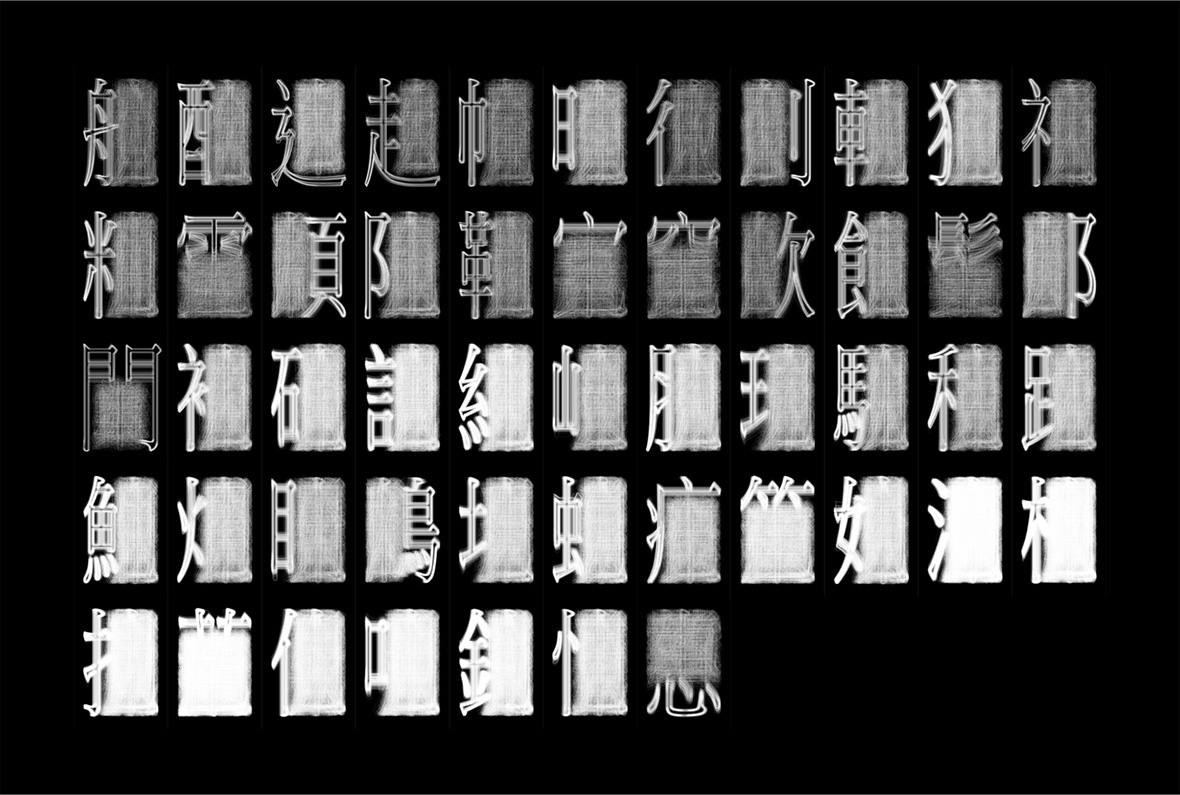
As the saying goes, a picture is worth a thousand words. In the work of Taiwanese designer Huang Jenwei, this adage becomes quite literal.
In a project titled Hanzi Gong, he’s created black-and-white posters assembled from 18,046 Chinese characters out of the Kangxi Dictionary—the definitive dictionary of imperial China between the 18th and early 19th century. Each artwork revolves around a radical, the foundational component of written Chinese. Certain radicals are more widely used in the language, and in Huang’s series, the number of words that incorporate each radical can be delineated with how opaque each letter is. The more characters that are layered on, the denser the frame—some are almost a solid white, while others are translucent grays.
Take, for example, the radical “wood” (mù 木), which is used in 1043 characters in the Kangxi Dictionary. Stacking them all together, Huang forms a near-impenetrable, cocoon-like entanglement of white lines. As the radical sits in the same place in every character, it’s the only part that’s easily legible. The rest of the character is familiar yet foreign.
俗话说得好,一画胜千言。这句话在台湾设计师黃任蔚的作品中得到了最直接的诠释。
在名为《汉字宫》的项目中,他创作了一系列黑白色作品,依据 18 至 20 世纪初的中文权威字典《康熙字典》中的 18,046 个汉字进行组合,每一幅作品都围绕一个偏旁部首展开创作。偏旁部首是构成每个汉字的基本单位,不同偏旁的常用程度各有不同。在这个系列中,每个偏旁所组成的汉字数量可以从画面的透明度来分辨。层叠的汉字越多,透明度也就越低,越能说明该偏旁在汉字中出现频率的高低 —— 因而在画面上,有的作品看上去是近乎实心的白色,而有的则是半透明的灰色。
例如,字典中呈现了 1043 个包含偏旁“木”的汉字,黃任蔚把这些汉字堆叠在一起,共筑一个几乎无法穿透的画面,如丝缕交缠的蚕茧一般。黃任蔚在汉字的选择上,尽量让偏旁位于每个字的同一位置,让偏旁成为画面上唯一尚可辨认的部分。
Hanzi Gong was inspired by a simple idea: throughout our lives, we experience countless emotional ups and downs, and language is one of the most frequently used mediums in expressing these experiences—but what if language itself could experience and express emotions of its own? What might that look like?
For the project, a total of 51 radicals were given a similar treatment. Through these typographic abstractions, Huang explores the emotionality of the Chinese written language, and how its expressive qualities still very much persist in a digital format.
《汉字宫》的灵感来自一个简单的想法:在生活中,我们会经历无数的情绪起伏,而语言是我们最常用的表达媒介之一;那么,如果文字从外表本身也有能够自陈其说,它们的外观会发生怎样的变化?
这个项目一共对 51 个偏旁部首进行了类似的处理。通过字体排版形成抽象图案,黃任蔚在当中探索了中文字体的情感性,以及其情感表现力的延续。
In Chinese calligraphy, the weight, length, and angle of different brushstrokes can convey mood and emotion. However, it’s typically thought that these expressive qualities are missing when they appear as computer fonts. Huang doesn’t believe this is necessarily the case—though they may not convey the full range of personality of handwritten formats, there’s still a level of emotionality to be found. “Every individual ideographic Chinese character can express moods, traits, and aspirations,” he explains. “It’s a form of expression that’s uniquely Chinese.”
在中文书法中,笔触的力度、长度和角度都可以传达出情绪和情感。但大多数人认为,当文字以计算机字体的形式出现时,就会失去这些表现力。黃任蔚却不这样认为,在他看来,虽然计算机字体不如手写字体那样有着丰富细腻的个性,但仍然能够传达一定程度的情感。他说道:“汉语中每一个表意文字都能传递情感、棱角或是某种期盼。这恰恰是汉字的独特之处。”
For the project, Huang settled on a Songti typeface, which can be considered the Chinese equivalent of sans-serif. Compared to Kaiti or Heiti fonts, he believes Songti is a font more grounded in everyday life, offering a certain level of relatability for readers. He also sees it as most closely resembling the typeface found in earlier versions of the Kangxi dictionary. “It’s a common font, often used in commercial prints,” he notes. “Heiti, due to its thick strokes, is more solemn; Kaiti is sensual and emotive; and Songti strikes a balance—it’s a font that’s structured, legible, and expressive.”
创作之初,黃任蔚决定采用宋体开启这个项目。中文宋体与英文中无衬线字体(sans-serif)相似。而之所以选择宋体,是因为相比于汉字楷体或黑体等类型字体,宋体更贴近日常生活,亦是生活中最常见的汉字字体,更容易让观众产生共鸣。另外,宋体也最贴近于《康熙字典》早期版本中的字体。他解释道:“宋体很大众化,像是在一些商务印刷出版中,都很常见。相比之下,黑体的笔画厚重,给人一种庄严的感觉;楷体很拟人化,注重情感和感性;宋体的笔画很平衡,拥有清晰、规整的结构,拥有平铺直述的特点。宋体的结构会比楷体还来的精练、方正,而黑体笔画厚度一致性高,却无法表达汉字一撇一捺的精神。” 在他看来,每一种字体背后,都被赋予了特别的感受:楷体(感性)、宋体(理性感性兼具)、黑体(理性)。
Of the entire project, Huang’s favorite posters are the two revolving around the radical xīn (心), meaning “heart.” Unlike most other radicals, xīn (心) comes in varying forms and positions. At times, it appears as a bottom radical, while other times, it appears on the left. One particular character of interest made with the radical xīn (心) is xìng (性)—a common Chinese suffix that turns verbs and nouns into adjectives. It’s used to describe a certain essence or quality, such as emotionality (gǎn xìng 感性), rationality (lǐ xìng 理性), and variability (biàn huà xìng 變化性). Other characters that incorporate the xīn (心) radical are similarly meaningful to Huang, especially those used to speak to different states of the human condition. “It’s a radical used in characters that help express our inner selves—whether it be our mood xīn qíng (心情) or our thoughts sī niàn (思念),” he says. “It’s an essential part of expressing what it means to be human.”
在整个项目中,黃任蔚最喜欢以“心”这个部首创作的两幅作品。不同于大多数其他部首,“心”在构成汉字时往往会呈现不同的形式、并放在不同的位置,有时在文字底部,有时则出现在左偏旁位置。在含部首“心”的汉字中,有一个字十分特别,那就是“性”,这个字常用作后缀,加在动词和名词后面,变成形容词,用来形容某种特点或品质,如感性、理性、变化性等等。对于黃任蔚来说,带有偏旁“心”的汉字总是意义非凡,尤其是用来形容人类情感、状态的时候。他说:“无论是‘思念’或‘心情,带有‘心’字偏旁的字往往更具有人情味,可以描述人类细腻的情感。”
Huang cites Russian abstract painter Wassily Kandinsky as a source of influence, pointing to philosophies outlined in his 1926 book Point and Line to Plane. In it, Kandinsky meditates on the emotionality of painting and how simple lines can infuse an artwork with drama and force. Huang believes these concepts apply to Chinese writing as well. The lineage of the language means each character comes with meaning that has persisted and evolved with time, though these subtleties are often only intelligible with a thorough understanding of Chinese history and etymology. “Chinese is one of the four oldest scripts in the world, and the only one that’s still in use today,” he says, “The cultural history of the Chinese written language gives each character a lot of depth and meaning.”
黃任蔚在创作上借鉴了俄罗斯抽象画家瓦西里·康定斯基(Wassily Kandinsky)的创作思想,并引述了他在 1926 年出版的《点、线和面》(Point and Line to Plane)一书中的理念。书中,康定斯基讲述了绘画的情感性,以及简单的线条如何为艺术作品注入戏剧性和力量。黃任蔚认为,这一理念也同样适用于汉字。汉字源远流长,意味着每个汉字都蕴含着传统、深远的意义、以及时间推移的过程,只不过这些微妙之处通常需要对中国历史和词源有深彻的认知才能够理解得到。他说:“汉字是世界上最古老的四大自源文字之一,更是其中唯一沿用至今的文字。作为华人悠久的历史文化遗产,每个汉字背后都蕴含很多深意。”
But even without an exhaustive grasp of Chinese etymology, people who can read the language are still able to find personal meaning in each character. Depending on the individual viewing the artwork, they may spot different components emerging from its complex layers, and thus, identify specific words. This is entirely by design. “The Chinese written language has human qualities, in that they’re both everchanging and unchanging at the same time,” Huang says, noting that it’s all a matter of perspective. “Ultimately, the abstraction of these characters is an expression of the fluctuation of life and emotions.”
纵使缺乏对汉字词源的深入了解,只要看得懂中文,观众仍然可以在每个汉字中找到自己解读的意义。在欣赏黃任蔚这些艺术作品时,每个人可能会从复杂的层次中看到不同的字形,从而辨识出不同的汉字,而这也是艺术家本人有意为之,他指出这主要取决于观看的角度:“汉字就像人一样,动则千变万化;静则永恒不变。以抽象来表达汉字是具有生命力与情感变化的一种方式。”
Like our stories? Follow us on Facebook and Instagram.
Behance: ~/jenweihuang
Contributor: David Yen
Chinese Translation: Olivia Li

